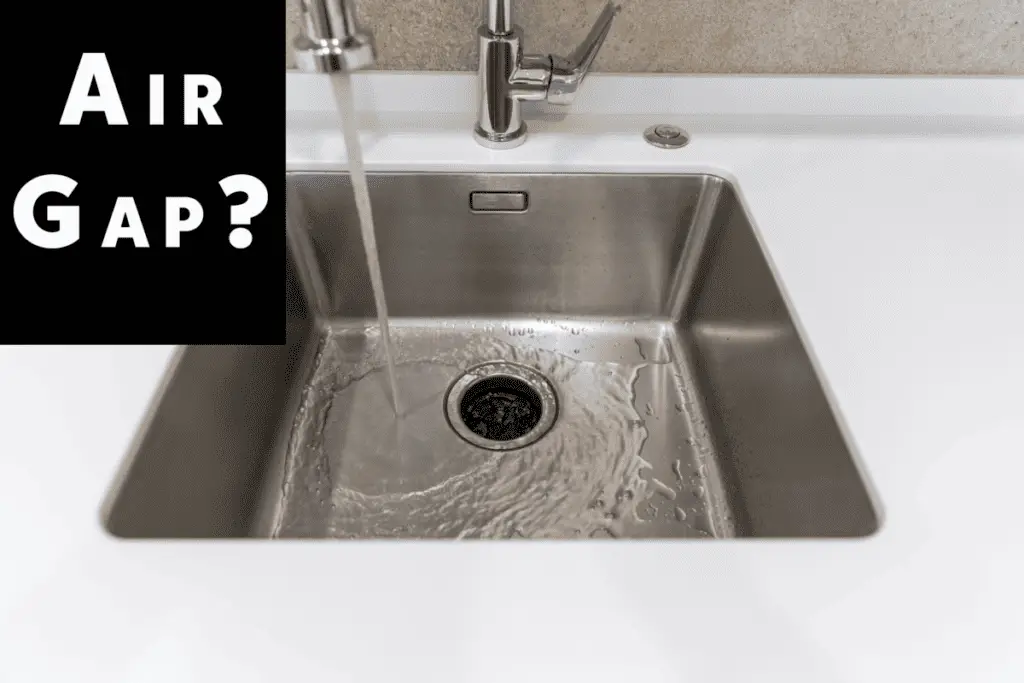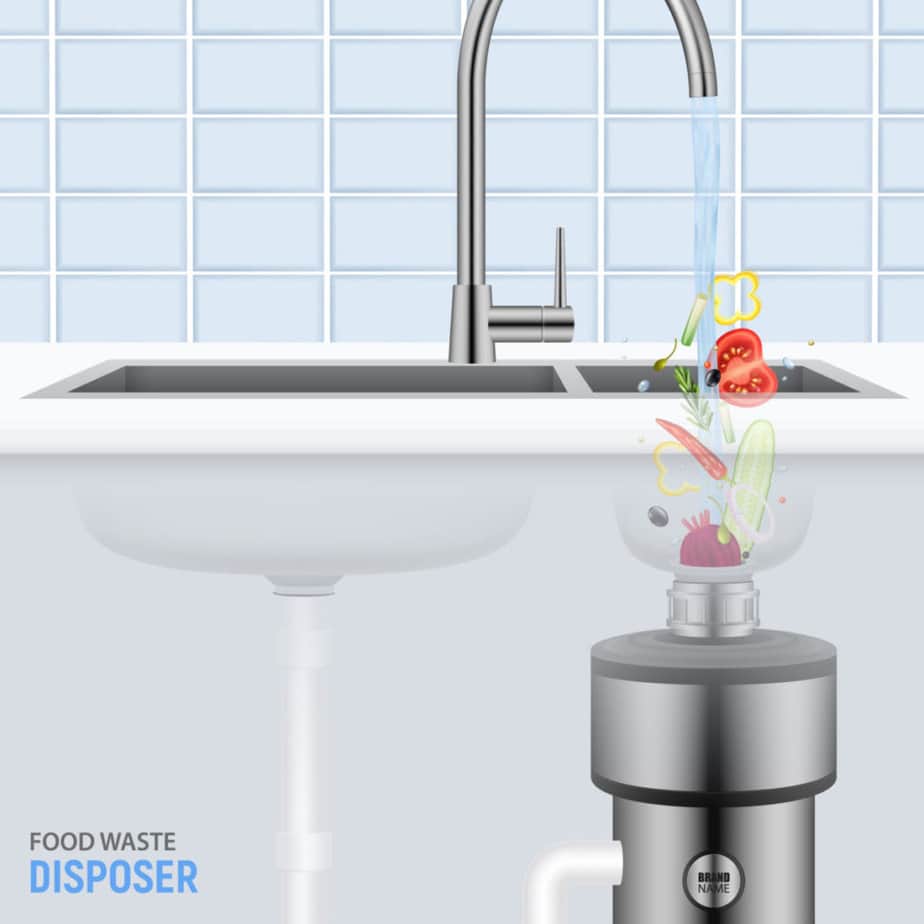If you notice something wrong with your kitchen and think it may have something to do with the air gap, it is good to know a little about what it does first.
An air gap is a cylinder-shaped pipe that is used in the space between a kitchen sink and dishwasher to prevent unpotable water from flowing back up to and mixing with potable water. Air gaps may be required according to local plumbing codes, but they are not always required.
There are other options, aside from using an air gap, but some sort of holding space for water to prevent clean and dirty water from mixing. How do you know what is best for you? To answer this question, a few things need to be addressed first.
What is an Air Gap?
An air gap is a vertical space that does not hold anything in it, aside from air. It is not air pressure or anything of that sort, rather it is a holding space in case water floods the pipe from the sink. The whole purpose of an air gap is to prevent the potable water from mixing with unpotable water.
Potable water is water that can be used to clean or drink. The opposite of this is unpotable water or the water that has hit anything that can be dirty.
Unpotable water is any water that cannot be used to clean or drink. Water that has hit the sink becomes unpotable and can no longer be used because it is not sanitary. The sink may appear clean, however, bacteria can still be spread through water being used after it hits the sink. An air gap fixes this problem because it prevents potable and unpotable water from mixing.

Where is the Air Gap Located?
An air gap is often located between the sink and dishwasher fixtures in your house, but you may not have one in your house at all. The air gap is located on the countertop, next to the faucet. Because it is located between the sink and dishwasher, it can spew water into the sink if water does build up in the pipes.
It is located in this area because this is the best way to avoid unpotable water returning to the dishwasher. There is a line that leads up from the dishwasher to the air gap as well as from the P trap under the sink to the air gap.
Why Use an Air Gap?
Air gaps are useful because they prevent potable water (or clean water) from mixing with unpotable water (or unclean water). This becomes problematic, especially with a dishwasher. If water begins to go back up and fill the pipe, the water will begin to spill into the dishwasher. This can prevent the dishes from getting clean.
In all reality, it can destroy your dishwasher. Having an air gap helps prevent having to replace a dishwasher every time plumbing issues occur in your kitchen area.
Air gaps just prevent sink water from interfering with a dishwasher cycle.
Are Air Gaps Required in a Plumbing System?
Some examples of places that require an air gap are California, Nevada, New Jersey, and Texas.
Air gaps are mainly required in bigger cities. In places where an air gap is not required, the drain hose has to have a high loop, reaching from the floor to prevent potable water and unpotable water from combining.

What Can You Have Instead of an Air Gap?
In places without an air gap, some sort of “holding cell” for unpotable water is required. There are 3 possible options.
The first option is, of course, the air gap. The second option is running the dishwasher drain line from the bottom of the cabinet, looping above the discharge point, and being secured in place. The third option is running the drain line from the top of a cabinet above the discharge point and being secured in place.
Do Air Gaps Require Maintainance?
Air gaps do require a little bit of maintenance. You may notice draining problems in your dishwasher. It may very well be the dishwasher itself that is the issue, however, the air gap may be also causing the problem.
For example, if you notice draining problems in your dishwasher, it may be a good idea to check to see if the air gap needs cleaning. Simply remove the silver cap from the air gap. You will see white-colored tubing underneath that has a hole on both sides of it. You can remove the top from the air gap. You may notice a bunch of gunk stuck inside of it.
You can use a toothpick to remove the gross stuff stuck inside. After cleaning it out, put the white top back on, followed by the silver cap, lining up the holes on the silver cap with the holes on the white tubing. Run a drain cycle on your dishwasher, and the dishwasher should drain perfectly. If the dishwasher still does not drain as normal, the problem is most likely with the dishwasher itself.
Is an Air Gap Right for You?
If there is already an air gap installed in your kitchen, it is best to just have the air gap rather than replace the drain line for your dishwasher because of the amount of money it will cost to redo the drain line between the dishwasher to the sink.
If you live in a highly populated city, the plumbing code may have insight as to whether or not you need an air gap. If the code gives you an option, however, how do you know what to choose?
Having a high loop may be better if you look at it from an aesthetic point of view. Depending on the look of your kitchen, you may not want a random cylinder pipe coming out of the sink. Even though the pipe does not stand that high above your sink, it may appear weird to you.
In another case, if there is already a high loop installed in the drain line, having an air gap is not necessary. The high loop works in such a way that an air gap is not needed.
If a plumber suggests that you use an air gap or the state guidelines regarding drainpipes require one, it is smart to follow the advice and direction given and ensure you have one.
Related Topics:
If you like the article above, here are some other similar articles you should check out!
Do Garbage Disposals Need An Air Gap?
Garbage Disposal Air Switch-Best Picks, Working, Problems, Pros, and Cons
Garbage Disposal Switch Options – Air Switch vs. Wireless vs. Toe kick
